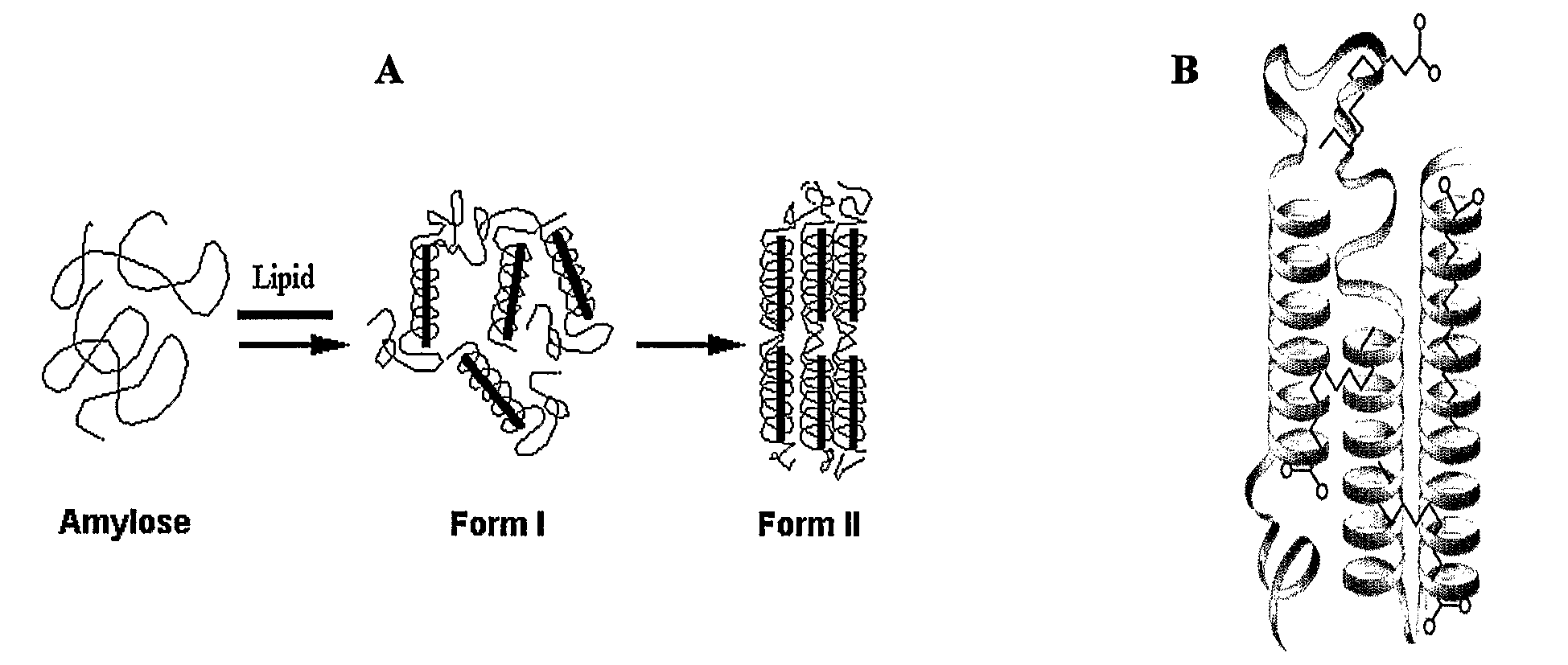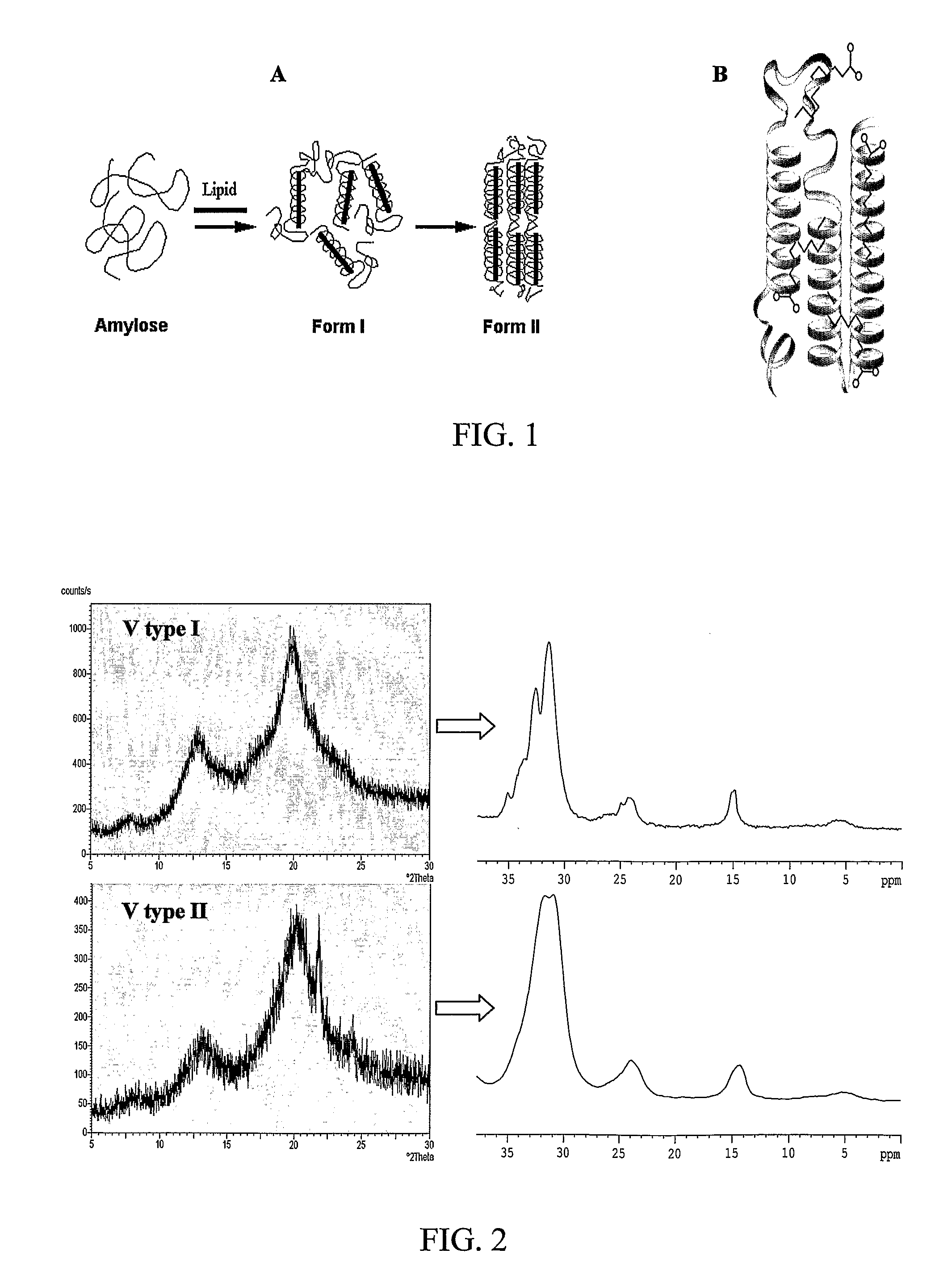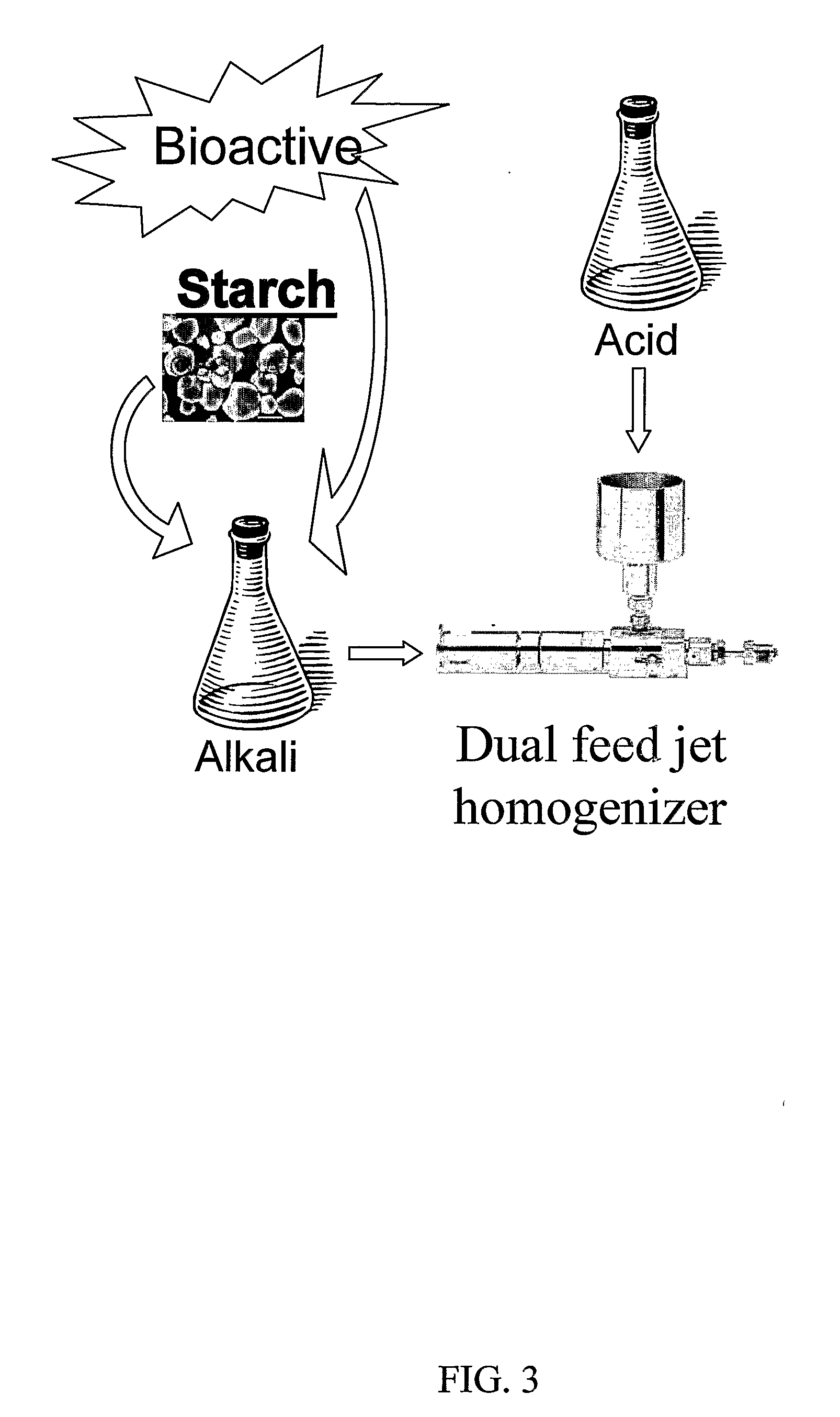Non-covalent complexes of bioactive agents with starch for oral delivery
a bioactive agent and non-covalent technology, applied in the direction of biocide, plant growth regulator, pharmaceutical non-active ingredients, etc., can solve the problems of major technological challenges in the introduction of these agents into foods, and achieve the effects of convenient conversion to dry compositions, uniform particle size distribution, and efficient and reliable particle generation
- Summary
- Abstract
- Description
- Claims
- Application Information
AI Technical Summary
Benefits of technology
Problems solved by technology
Method used
Image
Examples
example 1
Effect of Encapsulation of Saturated, Omega 3, and Polyunsaturated Fatty Acids by Amylose
[0127]The aim of these studies was to monitor the effects of guest molecular structure on nano-capsule properties via host-guest interactions and the feasibility of such nanoencapsulation. To that end, different fatty acids having different conformations were used as ligands:unsaturated 18:0 stearic acid (SA), cis-cis-18:2 linoleic acid (LA), cis-trans-18:2 conjugated linoleic acid (CLA), 20:4 arachidonic acid (AA), 20:5 eicosapentaenoic acid (EPA) as well as 22:5 docosahexadecanoic acid (DHA). Amylose-lipid complexes produced with each of these fatty acids (FAs) was studied by DSC to determine thermostability, XRD to determine complex crystallinity, Nuclear Magnetic Resonance (NMR) techniques to study the conformation, mobility and the arrangement of the ligands in the hydrophobic pocket, and AFM / NSOM to characterize supramolecular structure.
Experimental
[0128]Amylose-fatty acid mixtures (10:1 w...
example 2
Alternative Methods for the Production of Amylose- or Starch-Fatty Acid Mixtures
[0130]The aim of these experiments was to monitor functional and structural properties of amylose- or starch-fatty acid complexes produced by different complexation processes.
Experimental
[0131]Four complexation processes were tested:[0132]1. Amylose-lipid complexes were produced via DMSO as follows: amylose-fatty acid mixtures (10:1 w / w) were dissolved in DMSO at 90° C., then rapidly diluted (1:20 w / w) into water and allowed to complex for 15 min in a water bath. Complexes formed were washed, separated by centrifugation and freeze dried into a fine powder;[0133]2. Amylose-lipid complexes were produced by standard acidification reaction as follows: amylose and fatty acid were separately dissolved in an alkali solution (0.1 M KOH), mixed, and then the pH was lowered to about 4.7, leading to a 24 hr crystallization step at either 90° C. or 30° C.;[0134]3. Food grade high amylose corn starch (HACS) and stear...
example 3
Complex Formation of Fatty Acids and Starch Under Different Dissolution Temperatures
[0138]Inclusion of the fatty acids in V-amylose nanocapsules was carried out based on a method previously described (Lalush et al, 2005, Biomacromolecules, 6: 121-130, 2005). Basically, 6 g of the indicated starch, i.e., high amylase corn starch (HASC), corn starch, and waxy starch, were dissolved in 400 ml 0.1 M KOH solution, either at room temperature for 24 hours or at ˜85° C. for an hour. Resulting solution was then mixed with 600 ml of 0.1 M KOH containing 0.45 g stearic acid at similar temperature (25° C. or ˜85° C., respectively). The resulting 1 liter of alkali mixture was then homogenized with 0.1-0.2 M phosphoric acid to yield a cloudy solution at a pH of ˜5 by adjusting the flow rate of the acid to the homogenizer (each starch and operating pressure level required a different acidic concentration to achieve proper outlet pH). The high pressure homogenization was performed in Micro DeBee ho...
PUM
| Property | Measurement | Unit |
|---|---|---|
| Temperature | aaaaa | aaaaa |
| Temperature | aaaaa | aaaaa |
| Length | aaaaa | aaaaa |
Abstract
Description
Claims
Application Information
 Login to View More
Login to View More - R&D
- Intellectual Property
- Life Sciences
- Materials
- Tech Scout
- Unparalleled Data Quality
- Higher Quality Content
- 60% Fewer Hallucinations
Browse by: Latest US Patents, China's latest patents, Technical Efficacy Thesaurus, Application Domain, Technology Topic, Popular Technical Reports.
© 2025 PatSnap. All rights reserved.Legal|Privacy policy|Modern Slavery Act Transparency Statement|Sitemap|About US| Contact US: help@patsnap.com



